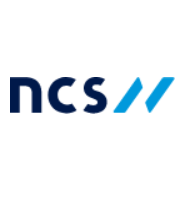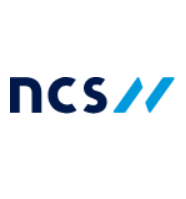
NCS - Public Bug Bounty Program
NCS Group is a multinational information technology company headquartered in Singapore
Reward
Program
Hacktivity
NCS
NCS Group is a multinational information technology company headquartered in Singapore.
Security is very important to us and this Bug Bounty program shall help us meet highest industry standards to offer the most secure service and experience to all parties.
Program Rules
Testing Policy and Responsible Disclosure
Please adhere to the following rules while performing research on this program:
- Denial of service (DoS) attacks on NCS applications, servers, networks or infrastructure are strictly forbidden.
- Avoid tests that could cause degradation or interruption of our services.
- Do not use automated scanners or tools that generate large amount of network traffic.
- Do not leak, manipulate, or destroy any user data or files in any of our applications/servers.
- Do not copy any files from our applications/servers and disclose them.
- No vulnerability disclosure, full, partial or otherwise, is allowed.
Reward Eligibility
We are happy to thank everyone who submits valid reports which help us improve the security of NCS, however only those that meet the following eligibility requirements may receive a monetary reward:
- You must be the first reporter of a vulnerability.
- The vulnerability must be a qualifying vulnerability (see below).
- The report must contain the following elements:
- Clear textual description of the vulnerability, how it can be exploited, the security impact it has on the application, its users and NCS, and remediation advice on fixing the vulnerability
- Proof of exploitation: screenshots demonstrating the exploit was performed, and showing the final impact
- Provide complete steps with the necessary information to reproduce the exploit, including (if necessary) code snippets, payloads, commands etc
- You must not break any of the testing policy rules listed above
- You must not be a former or current employee of NCS or one of its contractors.
Reward amounts are based on:
- Reward grid of the report's scope
- CVSS scoring and actual business impact of the vulnerability upon performing risk analysis
PII Bonus
Only vulnerabilities that lead to direct PII exposure without the need for user interaction will be eligible for bounty. A PII bonus will be given in addition to the BBP award.
We are running a special project where we are only looking specifically for vulnerabilities (without the need for user interaction) that lead to direct PII exposure.
Bounty Rewards
| PII Leakage | Additional Bounty Reward |
|---|---|
| Less than 100 | USD $0 |
| Contains 100 to 200 PII leakage | USD $500 |
| Contains more than 200 PII Leakage | USD $1,000 |
You do not have to validate how many PII records were exposed beyond the need to prove that the vulnerability exists and PII is impacted. E.g. If you found an IDOR vulnerability, you can report it to us, our team will investigate internally and let you know what is the estimated amount of PII affected if the IDOR was to be exploited at scale.
FYI, as we are based in Singapore, PII are defined as per PDPA:
Ineligible vulnerability reports
Vulnerabilities that require user interaction (e.g. CSRF, XSS or CORS) will not be eligible for this bonus. Below are some examples of ineligible vulnerability reports for PII bounty tier:
- Reflected or Stored XSS that leads to hackers being able to retrieve PII. Ineligible for PII bonus as it requires user interaction (clicking on malicious link or browsing to malicious page). Exceptions can be considered for Blind XSS on administrative users that have access to vast PII data.
- CSRF/CORS misconfiguration that leads to hackers being able to retrieve PII or perform account takeover. Ineligible for PII bonus as it requires user interaction (clicking on malicious link).
- Subdomain takeover that leads to hackers being able to retrieve cross-domain cookies, and thereby perform account takeover and PII. Ineligible for PII bonus as it requires user interaction (browsing to the malicious subdomain).
Geoip restriction
https://support.dialog.com.au/ is only accessible from Australia.
Please use a VPN to test this asset if you are not located in Australia.
Reward
| Asset value | CVSS | CVSS | CVSS | CVSS |
|---|---|---|---|---|
| $75 | $450 | $1,200 | $3,000 |
Systemic issues
We appreciate all valid reports submitted to our program that enhance our security. However, please note that if a similar issue (see definition in 'More info') has already been reported, by you or any other hunter, the reward will be decreasing according to these percentages.
Scopes
| Scope | Type | Asset value | Expand rewards grid |
|---|---|---|---|
| *.ncs.co | Web application | ||
Low Medium High Critical | |||
| *.dsanalytics.com | Web application | ||
Low Medium High Critical | |||
| *.dialog.com.au | Web application | ||
Low Medium High Critical | |||
| *.ncsimpact.co | Web application | ||
Low Medium High Critical | |||
Out of scopes
- All domains or subdomains not listed in the above list of 'Scopes'
Vulnerability types
Qualifying vulnerabilities
- SQL Injection (SQLi)
- Cross-Site Scripting (XSS)
- Remote Code Execution (RCE)
- Insecure Direct Object Reference (IDOR)
- Horizontal and vertical privilege escalation
- Authentication bypass & broken authentication
- Business Logic Errors vulnerability with real security impact
- Local files access and manipulation (LFI, RFI, XXE, SSRF, XSPA)
- Cross-Origin Resource Sharing (CORS) with real security impact
- Cross-site Request Forgery (CSRF) with real security impact
- Open Redirect
- Exposed secrets, credentials or sensitive information on an asset under our control and affecting at least one of our scopes
Non-qualifying vulnerabilities
- Information disclosure on main.*.js files
- Broken Link/Social media Hijacking
- Tabnabbing
- Missing cookie flags
- Content/Text injections
- Clickjacking/UI redressing
- Denial of Service (DoS) attacks
- Recently disclosed CVEs (less than 30 days sinces patch release)
- CVEs without exploitable vulnerabilities and PoC
- Open ports or services without exploitable vulnerabilities and PoC
- Social engineering of staff or contractors
- Presence of autocomplete attribute on web forms
- Vulnerabilities affecting outdated browsers or platforms
- Self-XSS or XSS that cannot be used to impact other users
- Any hypothetical flaw or best practices without exploitable vulnerabilities and PoC
- SSL/TLS issues (e.g. expired certificates, best practices)
- Unexploitable vulnerabilities (e.g. Self-XSS, XSS or Open Redirect through HTTP headers...)
- Reports with attack scenarios requiring MITM or physical access to victim's device
- Missing security-related HTTP headers which do not lead directly to an exploitable vulnerability and PoC
- Low severity Cross-Site Request Forgery (CSRF) (e.g. Unauthenticated / Logout / Login / Products cart updates...)
- Invalid or missing email security records (e.g. SPF, DKIM, DMARC)
- Session management issues (e.g. lack of expiration, no logout on password change, concurrent sessions)
- Disclosure of information without exploitable vulnerabilities and PoC (e.g. stack traces, path disclosure, directory listings, software versions, IP disclosure, 3rd party secrets, EXIF Metadata, Origin IP)
- CSV injection
- Malicious file upload (e.g. EICAR files, .EXE)
- HTTP Strict Transport Security Header (HSTS)
- Subdomain takeover without a full exploitable vulnerability and PoC or not applicable to the scope
- Blind SSRF without exploitable vulnerabilities and PoC (e.g. DNS & HTTP pingback, Wordpress XMLRPC)
- Lack or bypass of rate-limiting, brute-forcing or captcha issues
- User enumeration (e.g. email, alias, GUID, phone number, common CMS endpoints)
- Weak password policies (e.g. length, complexity, reuse)
- Ability to spam users (email / SMS / direct messages flooding)
- Disclosed or misconfigured public API keys (e.g. Google Maps, Firebase, analytics tools...)
- Password reset token sent via HTTP referer to external services (e.g. analytics / ads platforms)
- Stolen secrets, credentials or information gathered from a third-party asset that we have no control over
- Exposed secrets, credentials or information on an asset under our control that are not applicable to the program’s scope
- Pre-account takeover (e.g. account creation via oAuth)
- GraphQL Introspection is enabled
Reports of leaks and exposed credentials
In the context of this program, we do not intend to encourage, accept or reward reports of leaks that are not applicable to our program’s scope and policy. To summarize our policy, you may refer to the below table:
Hunters collaboration
When submitting new report, you can add up to 5 collaborators, and define the reward split ratio.
For more information, see help center.
Note: For reports that have already been rewarded, it is not possible to redistribute the rewards.
